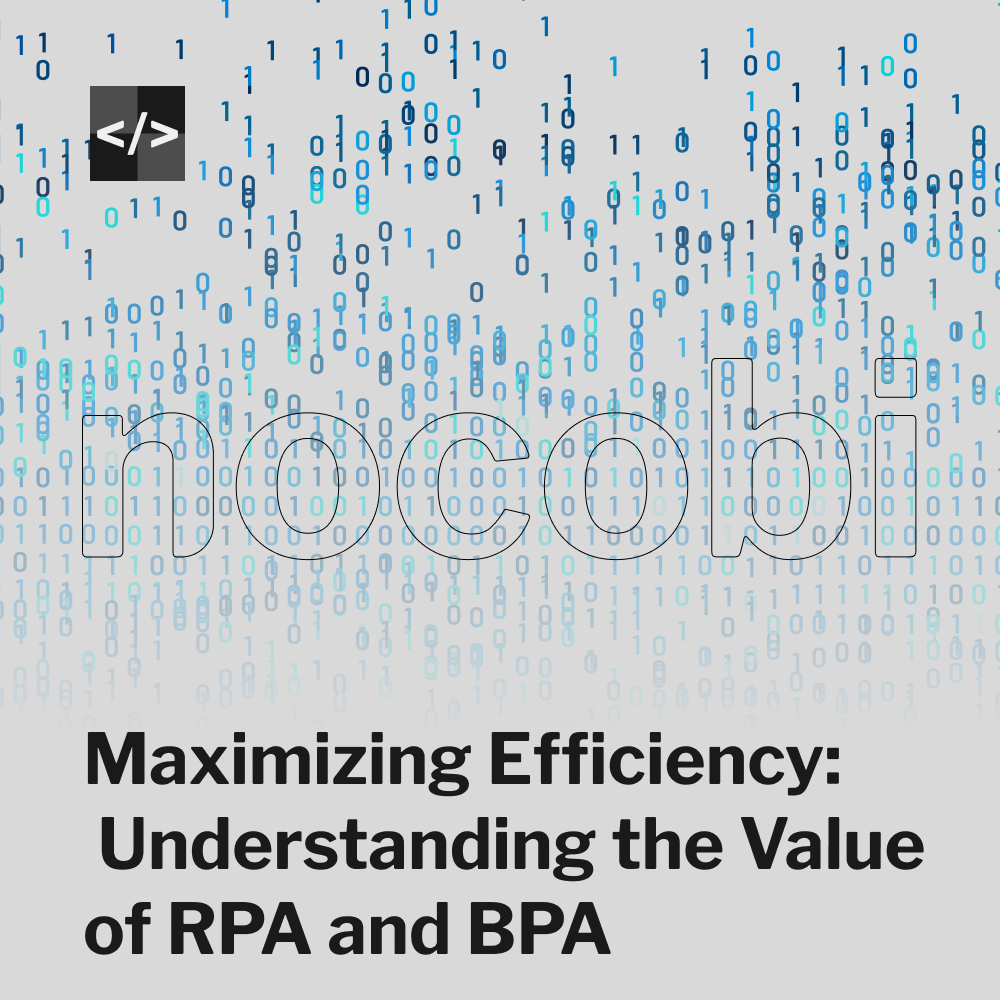What is RPA (Robotic Process Automation) and BPA (Business Process Automation)?
RPA (Robotic Process Automation) and BPA (Business Process Automation) are two technical advancements that are being widely embraced by many different businesses. They are transforming the way businesses automate their processes and structure their operations, leading to increased efficiency, productivity, accuracy, inexpensiveness, etc. In this text, we will the definition of those two, their key differences, and the benefits they offer to businesses.
RPA
By mimicking the activities of a human, robotic process automation (RPA) is a software solution that automates repetitive, time-consuming, and manual processes. RPA robots can be programmed to perform tasks such as data entry, form filling, customer service, online data extraction, offline data transformation, etc. They work by integrating with existing software applications and systems, such as customer relationship management (CRM) and enterprise resource planning (ERP) systems, to automate processes end-to-end and with it removing or lowering the need for employees to be involved in the corresponding tasks, leaving them freer for focusing on other ones.

BPA
Business Process Automation (BPA), on the other hand, refers to the automation of business processes to improve efficiency and reduce costs but its scope is larger and more complex than RPA and generally at turning an entire process into more efficient. This can include the automation of manual tasks using RPA, as well as the use of technologies such as workflow management software, document management systems, and artificial intelligence.

Differences
One of the key differences between RPA and BPA is their scope. RPA focuses specifically on automating repetitive tasks, whereas BPA aims to automate a wide range of business processes. Another key difference is the level of human involvement. RPA operates with minimal human intervention, whereas BPA often involves collaboration among humans and technology to streamline processes, connecting multiple processes that together lead to one or more ultimate goals while removing unnecessary parts of it.
Benefits
The benefits of RPA and BPA are many, and they can have a significant impact on a business’s bottom line. For example, by automating repetitive tasks, RPA can free up employees to focus on more high-value tasks, leading to increased productivity and job satisfaction. BPA can also help businesses improve the accuracy of their processes and reduce the risk of errors, leading to higher quality outcomes. In other words, when implemented and used properly, you can have something perform both better and faster by significant levels.
Finally, RPA and BPA can also improve the customer experience. By automating manual tasks, RPA can improve response times and reduce wait times, leading to a more positive customer experience. BPA can also help businesses streamline their processes, improving the overall customer experience.
Tools
Through Microsoft Power Platform specifically, there are two noteworthy products that can be used for these two kinds of transformations, respectively:
- Power Automate Desktop is a Windows application that provides a desktop automation solution for Windows-based tasks and workflows. It enables you to automate repetitive tasks on your local computer, such as data entry, file operations, and other manual processes;
- The cloud-based service Power Automate Online, on the other hand, offers a platform for automating corporate processes and workflows across a range of platforms and applications, including Microsoft and non-Microsoft systems. It offers a web-based interface for developing and managing workflows with an enormous, constantly expanding range of possibilities. This makes it possible for you to build, install, and execute automated workflows in the cloud.
Conclusion
Conclusion
RPA and BPA are powerful tools for businesses looking to automate their processes and streamline their operations.
Whether you’re looking to automate repetitive tasks or improve the efficiency of your entire business, RPA and BPA offer a range of benefits that can help you achieve your goals. With their ability to improve productivity, reduce costs, and improve the customer experience, they may help your business thrive unimaginably more in areas that you may have not even thought possible.
At nocobi, we’ve got you covered for this and other types of transformations for your company!




Deixe um comentário